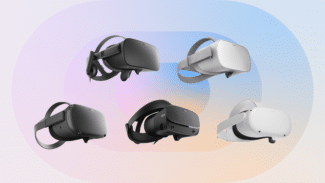Meta moves fast with its VR hardware, but often leaves customers in the dust.
It’s commonly said that Facebook, now Meta, didn’t launch new VR hardware in 2021 – but that’s not exactly true. In summer sales of Quest 2 were paused for 4 weeks. The main reason for this was to respond to a skin irritation issue with the facial interface. But when sales resumed, the $299 base model now came with 128GB of storage, up from 64GB before the pause.
At the time of the change The Walking Dead: Saints & Sinners and Myst were the biggest major Quest games, clocking in between 8GB and 10GB. But Meta would have known that just 3 months later Medal Of Honor: Above And Beyond would launch at a whopping 41GB. Given the original Quest 2 base model has just 52.7 GB of usable space (64 GB – 11.3 GB for the system), that leaves barely any space for other content. A headset owner with full storage will be much less likely to buy new games. With potentially huge titles like Grand Theft Auto: San Andreas, Assassin’s Creed, and Splinter Cell coming in future, Meta is already leaving customers behind who forked out $300 just six months ago.
For buyers of the original Oculus Quest or the Rift S, the situation is even worse. Quest 1 was priced $100 higher than its successor, yet just 13 months after it was taken off the market Resident Evil 4 launched as a Quest 2 exclusive. Since then, multiple major titles have forgone support for Quest 1 including After The Fall and Ultrawings 2. Meta’s own Horizon Worlds even dropped support for the headset, despite originally being marketed alongside it. The PC-based Rift S launched alongside Quest 1, but only received a few meaningful software updates before being abandoned, and was also replaced by Quest 2.
This trend goes back even further. Before Quest there was 2018’s Oculus Go, the $200 headset Facebook heavily marketed with celebrities including Wiz Khalifa, Jonah Hill, Adam Levine And Leslie Jones. The Go’s lack of positional tracking and simple laser pointer controller meant it got almost none of the applications popular on PC VR, and Facebook essentially abandoned it too when Quest launched, even removing its flagship social experience Oculus Rooms in 2019.

VR is a rapidly advancing new technology. I’m not expecting Meta to make clairvoyant long term product decisions, nor am I asking for resources to be wasted supporting obsolete hardware indefinitely. But what is clear is that as Meta moves forward so quickly it needs a way to bring customers along with it.
The solution here is obvious: an Apple style trade-in program. When buying the latest headset, Meta should allow customers to trade-in their old headset for a substantial discount.
Such a trade-in program would benefit both Meta and its customers. It would increase the number of people capable of using Horizon Worlds in VR and buying upcoming titles like San Andreas. If someone can’t afford the full price of a new headset but their current headset is unsupported or full, Meta is effectively pushing them away and refusing their business.
A trade-in program would let more people access the latest hardware and maximize the install base cutting edge VR content can target – a win all around.





